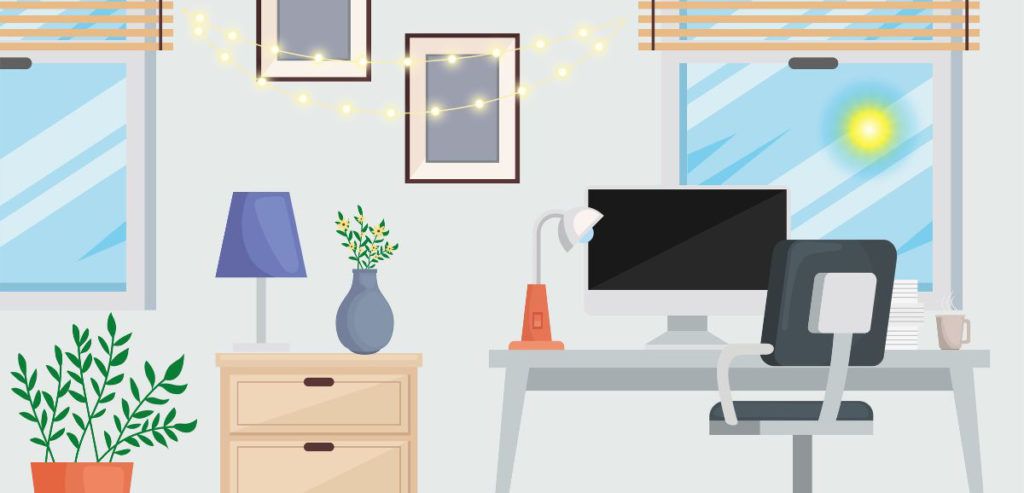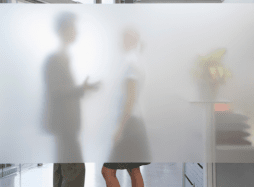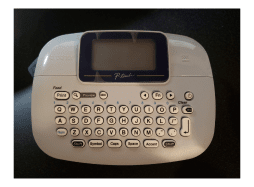Have you ever wondered why light in the office, or lighting in general, is so important to your mood and productivity? Well, this article will discuss in detail light psychology and how workplace lighting affects productivity, mood, and our overall health.
Workspace lighting has always had a major effect on my mood and productivity. I’ve been in a cubicle next to a wall of windows for several years and, after that, I was relegated to a cubicle in the middle of a large room with no access to natural light.
So I’ve certainly experienced the best of both worlds when it comes to office lighting. Let’s face it, an office with no windows can be a challenge when it comes to maintaining positive energy at work.
To combat the lack of natural sunlight I purchased a light therapy lamp that I use each morning in my small office for about an hour. I can get my daily dose of the blue light of the sun even though it’s manufactured and not natural sunlight.
Over the years for my desktop I originally purchased a sunlight desk lamp which was more of a basic lamp. I then upgraded to a more fully-functional LED desk lamp with USB port for charging in recent years for both my cubicle at work and my home office.
As you have probably already surmised, I’ve always been fully cognizant of how light affects me and have always gone out of my way to find light that mimics sunlight for my cubicle and my home office. The light fixtures that you choose should match your home office design and you should be able to find ones that work for your space.
Let’s look in more detail at how light plays a big role when it comes to our mood and our productivity at work.
Light Psychology – The Science Behind It
Light plays a crucial role in human beings’ daily lives and not only in the workplace. The psychological impact of light, encompassing biological and emotional effects, has attracted significant attention due to its influence on mood, productivity, health, and well-being.
Natural light, daylight, is a sort of magic elixir that does great things for what goes on in our minds. It has a powerful, nearly primordial effect on our well-being. Glare-free natural light boosts our mood, creativity, and also our cognitive performance.
Psychology Today
It’s no wonder that glare-free natural light is always the best option when it comes to workplace lighting. Harsh light due to glare can cause headaches as you work throughout the day.
When light biologically impacts us, it can improve or disrupt our sleep, cognition and overall well-being. It can improve mood and stabilize our circadian rhythms, helping us get a better and deeper nights sleep. Psychologically, light can decrease depression scores and even increase cognitive performance such as reaction time and activation.
The Psychological Impact of Light and Color
How Light Works
Have you ever wondered how we’re able to see things? Well, light is the answer. It’s a type of energy that travels in waves and interacts with everything around us. This interaction helps us see the colors, shapes, and textures of the objects that we come in contact with in our environment.
When we see things, light goes into our eyes and is turned into signals that go to our brain. These signals help us understand what we are looking at in our daily lives. The way the light looks can change how we feel and act. It can also affect our overall health and well-being.
Overview of the Psychological Effects of Light
Lighting conditions, as well as the intensity and colour of the light source, influence indeed the human biological cycles and the circadian rhythm, by increasing or decreasing the level of specific hormonal secretions (such as melatonin, namely the marker-hormone of circadian rhythms, produced by the pineal gland), that are responsible for certain neurophysiological states.
R. Tomassoni et al
The above research has shown that light not only plays a crucial role in our visual perception but also has a direct impact on our mental and emotional state.
Exposure to natural light has been linked to increased feelings of happiness, reduced stress, and improved sleep quality. I know for a fact that when I was exposed to a wondrous wall of natural light, my attitude toward working in that cubicle was extremely upbeat.
But, on the other hand, constant exposure to artificial light or lack of exposure to natural light can lead to negative impacts on mood and cognitive functioning. I certainly felt a negativity in my mood when I was moved into a dark cubicle with just fluorescent lights above me.
Other factors such as color temperature, intensity, and duration of light exposure can also significantly influence our psychology.
Discussion of How Light Affects Mood and Productivity
Light has a substantial impact on both mood and productivity in various settings, such as workplaces, educational environments, hospitals, and even at home. Different types of light can have specific effects on our emotions and behavior.
- Blue light: Often associated with daytime, blue light has been found to boost alertness, focus, and cognitive performance, making tasks seem less demanding. Blue light therapy lamps are utilized especially during the dark winter months to combat Seasonal Affective Disorder.
- Warm light: This type of light, typically emitted by the sun during the morning or evening, can induce a sense of calm and relaxation, promoting feelings of comfort and reducing stress. A definition of warm light are values between 0 and 3300° Kelvin.
- Dim lighting: Inadequate or dim lighting can lead to eye strain, fatigue, and decreased productivity, while bright light without glare has been shown to increase work satisfaction and efficiency.
Optimizing lighting conditions to accommodate the specific needs and preferences of an environment or individual can significantly improve overall mood and productivity. This is especially important when it comes to individual workspace lighting or, in general, overall workplace lighting.
Lighting in a home office is paramount when it comes to brightening up the space but also to set the mood for productivity.
The Impact of Light on Mood
Explanation of How Light Affects Mood
Light plays a significant role in influencing human mood and behavior. The brightness, color temperature, and the amount of natural light present in an environment can all affect people’s emotions and cognitive performance.
These factors have led to the proliferation of office lighting solutions such as LED desk lamps which allow you to adjust both the brightness or intensity of the light but also the color temperature.
Exposure to natural light has been shown to be the best solution to any sort of artificial lighting as it can enhance mood, creativity, and cognitive abilities.
Different Types of Lighting and Their Effects on Mood
Various aspects of lighting can have different impacts on mood, such as:
- Color temperature: Temperature of light, measured in Kelvin (K), is a numerical measurement of the color that’s emitted when an object is heated in a high enough temperature. As the temperature increases, the object changes colors and emits certain colors of that light. Warm lighting helps create a cozy and social atmosphere, while cool lighting can promote alertness and productivity.
- Brightness: The relative brightness of a light source compared to its surroundings can affect mood and perception. For example, in a grocery store setting, relative brightness can draw attention to products on shelves and impact purchasing decisions.
- Natural light: Exposure to natural light during the day has been linked to improved mood, increased energy, and better mental health.
Examples of How to Use Workspace Lighting to Improve Mood
There are several ways to utilize workspace lighting effectively to enhance mood and well-being.
- Maximize natural light: If at all possible, arrange workspaces and living areas close to windows, and use light-colored curtains to allow as much natural light in as possible. In a home office, in order to reduce glare, position your desk toward a window assuming your monitor is on your desk. This should prevent any adverse lighting effects on your computer screen.
- Choose the right color temperature: Use warm lighting in social areas like the living room, and cooler lighting in workspaces or areas where focus is needed, such as an office or a kitchen. In your workspace, at home or at work, a typical modern LED desk lamp will allow you to adjust both the brightness and color temperature of your lighting. Once you have identified the settings that work for you, you can probably save it as a favorite for future use.
- Adjust brightness levels: Utilize dimmer switches or adjustable lamps such as LED office lamps to control the amount of light and create a comfortable atmosphere depending on the time of day and the desired mood.
Ideal Color Temperature Chart by Job Title
| Job Title | Activity | Ideal Color Temperature (K) | Rationale |
|---|---|---|---|
| Surgeon | Performing surgery | 3000-6700 | These colors provide the surgeon with the most accurate and true tissue color rendition. |
| Graphic Designer | Designing graphics | 5000-6500 | This range provides a neutral white light that helps to accurately discern one color from another and details in design work. |
| Writer | Creative writing and editing | 3000-3500 | This warm light range was found to foster creativity in comparison to colder light ranges such as 4500K – 6000K, |
| Accountant | Analyzing financial data | 3500-4500 | This range provides a warm, soft light that helps to reduce eye strain and fatigue during long periods of data analysis. |
| Programmer | Writing code | 4000-5000 | This range is for the computer screen and can change based on the developer. F.lux is a program that can be used to determine which color temperature is ideal for the developer. It will adapt your screen based on the time of day and your preference. |
| Teacher | Teaching in a classroom | 5000-6500 | This range provides a bright, cool white light that helps to improve focus and alertness for both teachers and students. |
| Lawyer | Researching and analyzing legal documents | 3500-4500 | This range provides a warm, soft light that helps to reduce eye strain and fatigue during long periods of reading and analyzing legal documents. |
| Engineer | Designing and testing products | 5000-6500 | This range provides a neutral white light that helps to accurately represent colors and details in product design and testing work. |
The Impact of Light on Productivity
Explanation of How Light Affects Productivity
Light has a significant influence on human productivity and well-being. Exposure to natural light is beneficial as it helps regulate the sleep-wake cycle and mood, which in turn can affect overall productivity.
Natural light from both the morning and evening has been found to decrease depression and improve mood, energy, alertness, and productivity. Where there is no access to natural light, therapy lamps are utilized for a specified amount of time each morning to boost mood and energy especially in an office scenario.
Different light conditions also affect people’s ability to focus on visual tasks, as they impact the visual system. Furthermore, inadequate or poor lighting can lead to reduced productivity and even adverse health effects like eyestrain, fatigue, headaches, and stress.
Different Types of Lighting and Their Effects on Productivity
There are several types of lighting that can be used in workplace settings to optimize productivity:
- Natural Light: As mentioned previously, natural light has been associated with improved mood, energy, alertness, and productivity. When designing a workspace, it is essential to maximize the use of natural light, such as through large windows and skylights.
- Task Lighting: This type of lighting focuses on specific areas where work is being done. It ensures adequate illumination, minimizing strain on the eyes, and enhancing productivity.
- Ambient Lighting: This is the general lighting present in a room, providing a comfortable level of brightness that facilitates both work and relaxation. It contributes to creating a comfortable atmosphere, preventing glare, and reducing shadows that may cause eyestrain or fatigue.
Examples of How to Use Lighting to Improve Productivity
Implementing the right lighting strategies can significantly enhance work productivity. Here are a few options:
- Maximize the use of natural light by placing workstations near windows, using glass partitions or walls to allow light to penetrate, and avoiding heavy window coverings that block sunlight.
- Utilize task lighting, such as desk lamps or adjustable overhead lights, to ensure adequate illumination for specific tasks and reduce eyestrain.
- Choose energy-efficient and color-functional LED lighting for ambient and task lighting needs.
- Consider including adjustable, individually controlled lighting to enable employees to customize their lighting preferences.
By applying these strategies and understanding the impact of lighting on productivity, workspaces can be designed to support the well-being and performance of employees, ultimately contributing to overall business success.
Light Psychology – How Workplace Lighting Affects Productivity and Mood – A Recap
The psychology of light plays a significant role in our daily lives, affecting our mood, productivity, and overall well-being. Natural light has been shown to enhance people’s mood, creativity, and cognitive performance.
When at all possible, natural light is the best option but when it comes to workplace lighting or individual workspace lighting there are artificial lighting options that can simulate natural light.
Appropriate lighting in different environments can lead to improved focus, energy levels, and sleep, while insufficient lighting may contribute to discomfort and lack of enjoyment in a space.
It is essential to take advantage of the psychological impact of light in your living and working environments. By choosing the right type and hue of lighting, one can optimize cognitive performance and overall mood. To improve sleep and overall well-being, pay close attention to the balance of natural and artificial light sources throughout the day.
- Utilize natural light during daytime hours, particularly when it comes to workspace lighting, whenever possible to promote a positive mood and improved cognitive performance.
- Opt for warmer lighting in the evening to create a cozy, social atmosphere and promote relaxation.
- Consider cooler lighting for tasks requiring focus and concentration during the day.
Understanding the psychology of light not only helps us make more informed decisions about our lighting choices but also supports our overall health. By carefully considering the design and color of lighting in our homes and workplaces, we can create spaces that promote productivity, enhance our moods, and contribute to a balanced, satisfying life.
Bob has been blogging for over 20 years and has been an office and cubicle dweller for more than 35 years. He has been featured in numerous online publications such as US News and World Report, Bustle, and Work Awesome (you can read his articles here). He created the popular office website CubicleBliss in January 2011 and rebranded it as WorkspaceBliss in April 2020.
In the office he’s been an IT Manager, Applications Engineer, Systems Analyst, Software Project leader, and Programmer Analyst in his long career. He’s a Certified Microsoft Professional and possesses a Masters of Science degree and two Bachelor of Science degrees, one of those in Informational Technology.
During his career he has worked in the office full-time, as a hybrid remote worker, and has worked from home permanently.







